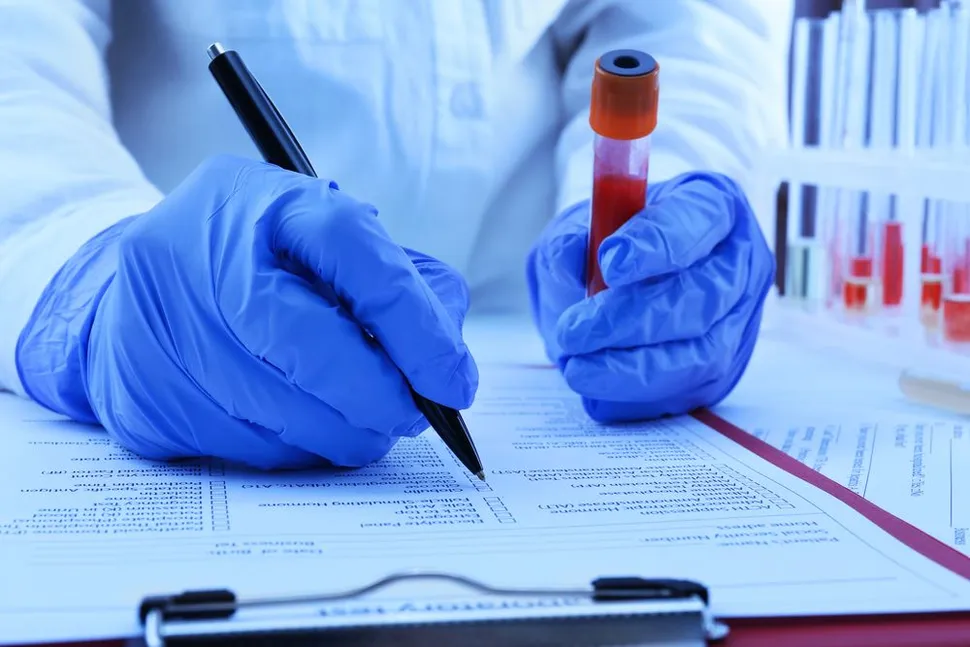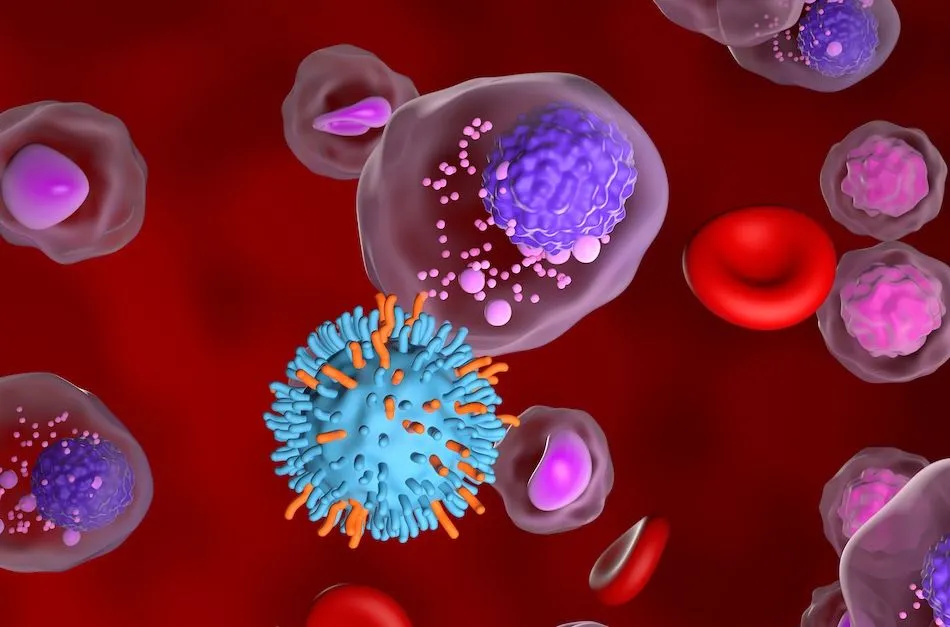Managing Smoldering Multiple Myeloma: Current Approaches and Ongoing Research

In a HealthTree webinar held in March 2024, Dr. Natalie Callander, from the University of Wisconsin, and Dr. Andrew Cowan, who is a member of the Fred Hutchinson Cancer Research Center, presented current updates and recent data on smoldering multiple myeloma (SMM). Here, we share some of the topics discussed during the webinar, but you can watch the full recording below.
What is Smoldering Myeloma?
SMM is a relatively new term (introduced in 1980) for patients who show signs of multiple myeloma but don't experience the full-blown disease. While some patients develop active myeloma within a few years, others experience a slow progression.
How Common Is SMM?
Recent studies suggest SMM may be more common than previously thought, potentially affecting up to 0.53% of the population over 40. Prevalence increases with age and is higher in men than women. Current data comes from the iStopMM, a study conducted in Iceland with the goal of screening every Icelandic person over the age of 40:
- Patients were diagnosed with either MGUS or Smoldering
- The median age was 70 years old, and 60% were males
- The median M protein concentration was 0.62 g/dl
- 73% had 11-20% bone marrow plasma cells
We need additional studies to understand the other populations around the world.
What Is The Natural History of SMM?
There seem to be two distinct patterns of SMM progression. One group experiences a rapid initial phase followed by a plateau. The other group shows a low-risk profile similar to a related condition called MGUS (Monoclonal Gammopathy of Undetermined Significance). There is also a risk of developing amyloidosis (50%).
Progression risk increases with time since diagnosis:
- 10% per year in the first five years.
- 3% per year between years five and ten.
- 1% per year thereafter.
Are There Any Red Flag Symptoms? How Is Risk Stratification Done?
Doctors use factors like bone marrow plasma cell percentage, protein levels, and genetic abnormalities to assess individual risk of progression.
High-risk patients (with two or more risk factors) have a nearly 50% chance of progressing to MM within two years.
The most commonly used risk-stratification system is the 20/2/20: bone marrow plasma cells greater than 20%, monoclonal protein greater than 2, and serum-free light chain involved and uninvolved at a ratio greater than 20. This can classify SMM patients according to their risk of progression to myeloma:
- Low Risk, in 2 years, is 6.2%
- Intermediate Risk, in 2 years, is 17.9%
- High Risk, in 2 years, is 44.2%
The Pangea Model may also be used to determine risk stratification. The site is accessible for free and calculates a patient's risk based on the input data.
Transitioning to Active Myeloma
Patients with SMM who progress to active myeloma often experience bone lesions, leading to pain and prompting imaging tests. Other symptoms include anemia, though renal failure is less common.
How Is Smoldering Multiple Myeloma Typically Diagnosed and Treated?
SMM is often discovered during routine blood tests showing elevated protein levels. Current treatment approaches aim to delay or prevent progression to MM. Watch the webinar to learn more about the diagnosis and treatment options for SMM patients, with a focus on high-risk patients [Go to minute 29:00].
Questions and Answers
Find below some of the questions asked by the live audience [Go to minute 49:00]. Join our next webinar to ask your questions directly with the experts!
- What is the goal number of patients for the ECOG trial E4A17, and how close are you to reaching this goal?
- Are there specific clinical trials that will disqualify me from future clinical trials, especially in SMM?
- How are we balancing the toxicity of treatment with the benefit for patients with SMM?
- Would treatments that are successful in high-risk SMM eventually be used for moderate-risk SMM?
SMM is a complex disease, but there is hope for the future. New treatments are being developed, and clinical trials are underway to investigate these treatments. If you have SMM, it is important to talk to your doctor about your treatment options.
Watch the Full Webinar and Join Us for the Next One!
This summary provides a brief overview of SMM. The full webinar recording will cover treatment options, and clinical trials, and answer questions from patients in more detail. Subscribe to our newsletter to register for our upcoming virtual events:
In a HealthTree webinar held in March 2024, Dr. Natalie Callander, from the University of Wisconsin, and Dr. Andrew Cowan, who is a member of the Fred Hutchinson Cancer Research Center, presented current updates and recent data on smoldering multiple myeloma (SMM). Here, we share some of the topics discussed during the webinar, but you can watch the full recording below.
What is Smoldering Myeloma?
SMM is a relatively new term (introduced in 1980) for patients who show signs of multiple myeloma but don't experience the full-blown disease. While some patients develop active myeloma within a few years, others experience a slow progression.
How Common Is SMM?
Recent studies suggest SMM may be more common than previously thought, potentially affecting up to 0.53% of the population over 40. Prevalence increases with age and is higher in men than women. Current data comes from the iStopMM, a study conducted in Iceland with the goal of screening every Icelandic person over the age of 40:
- Patients were diagnosed with either MGUS or Smoldering
- The median age was 70 years old, and 60% were males
- The median M protein concentration was 0.62 g/dl
- 73% had 11-20% bone marrow plasma cells
We need additional studies to understand the other populations around the world.
What Is The Natural History of SMM?
There seem to be two distinct patterns of SMM progression. One group experiences a rapid initial phase followed by a plateau. The other group shows a low-risk profile similar to a related condition called MGUS (Monoclonal Gammopathy of Undetermined Significance). There is also a risk of developing amyloidosis (50%).
Progression risk increases with time since diagnosis:
- 10% per year in the first five years.
- 3% per year between years five and ten.
- 1% per year thereafter.
Are There Any Red Flag Symptoms? How Is Risk Stratification Done?
Doctors use factors like bone marrow plasma cell percentage, protein levels, and genetic abnormalities to assess individual risk of progression.
High-risk patients (with two or more risk factors) have a nearly 50% chance of progressing to MM within two years.
The most commonly used risk-stratification system is the 20/2/20: bone marrow plasma cells greater than 20%, monoclonal protein greater than 2, and serum-free light chain involved and uninvolved at a ratio greater than 20. This can classify SMM patients according to their risk of progression to myeloma:
- Low Risk, in 2 years, is 6.2%
- Intermediate Risk, in 2 years, is 17.9%
- High Risk, in 2 years, is 44.2%
The Pangea Model may also be used to determine risk stratification. The site is accessible for free and calculates a patient's risk based on the input data.
Transitioning to Active Myeloma
Patients with SMM who progress to active myeloma often experience bone lesions, leading to pain and prompting imaging tests. Other symptoms include anemia, though renal failure is less common.
How Is Smoldering Multiple Myeloma Typically Diagnosed and Treated?
SMM is often discovered during routine blood tests showing elevated protein levels. Current treatment approaches aim to delay or prevent progression to MM. Watch the webinar to learn more about the diagnosis and treatment options for SMM patients, with a focus on high-risk patients [Go to minute 29:00].
Questions and Answers
Find below some of the questions asked by the live audience [Go to minute 49:00]. Join our next webinar to ask your questions directly with the experts!
- What is the goal number of patients for the ECOG trial E4A17, and how close are you to reaching this goal?
- Are there specific clinical trials that will disqualify me from future clinical trials, especially in SMM?
- How are we balancing the toxicity of treatment with the benefit for patients with SMM?
- Would treatments that are successful in high-risk SMM eventually be used for moderate-risk SMM?
SMM is a complex disease, but there is hope for the future. New treatments are being developed, and clinical trials are underway to investigate these treatments. If you have SMM, it is important to talk to your doctor about your treatment options.
Watch the Full Webinar and Join Us for the Next One!
This summary provides a brief overview of SMM. The full webinar recording will cover treatment options, and clinical trials, and answer questions from patients in more detail. Subscribe to our newsletter to register for our upcoming virtual events:

about the author
Lisa Foster
Lisa Foster is a mom of 3 daughters and 1 perfect grandchild, a puzzle lover, writer and HealthTree advocate. She believes in the mission of the foundation and the team that builds it forward. She calls Houston, Texas home.
More on HealthTree Programs
Trending Articles
Upcoming Events




Get the Latest Multiple Myeloma Updates, Delivered to You.
By subscribing to the HealthTree newsletter, you'll receive the latest research, treatment updates, and expert insights to help you navigate your health.
Together we care.
Together we cure.
3x Faster.













